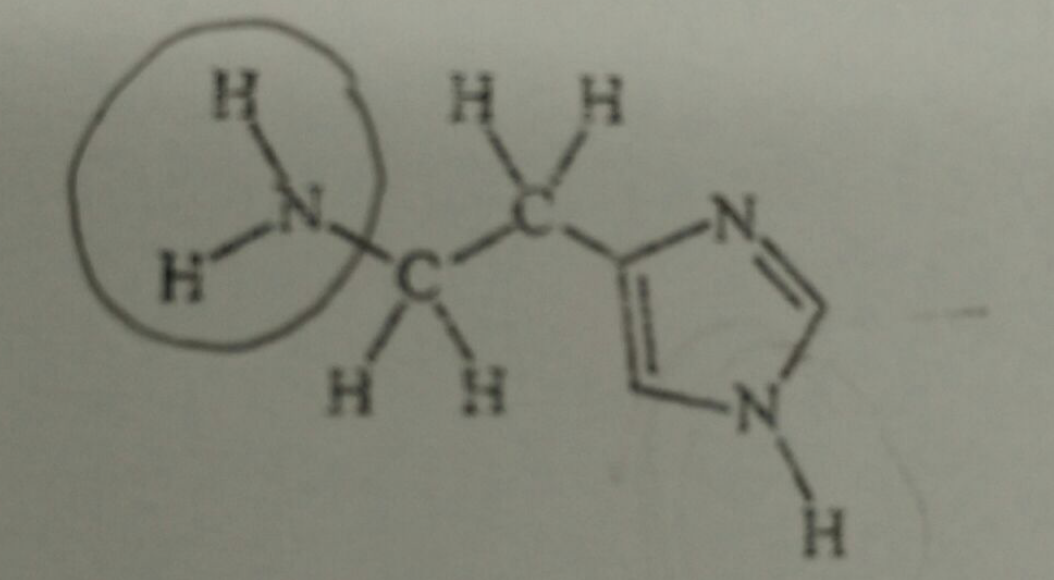Q1) In allergy sufferers, histamine causes runny noses, red eyes, and other symptoms. Here is its structural formula.
a. Give the chemical formula for this compound.
C5H9N3
b. Circle the amine functional groups in histamine.
c. Which part (or parts) of the molecule make the compound water-soluble?
The portions of the molecule with the nitrogen and a hyrogen atom directly attached to it.
Q2) Antihistamines are widely used drugs for treating symptoms of allergies caused by reactions to histamine compounds. This class of drug competes with histamine, occupying receptor sites on cells normally occupied by histamine. Here is the structure for a particular antihistamine.
a. Give the chemical formula for this compound.
C16H21N2
b. What similarities do you see between this structure and that of histamine (shown in the previous question 1) that would allow the antihistamine to compete with histamine?
The presence of such structures would allow antihistamine to compete with histamine.
Q3) Consider this statement. “Drugs can be broadly classed into two groups: those that produce a physiological response in the body and those that inhibit the growth of substances that cause infections.” Into which class does each of these drugs fall?
a. aspirin
b. morphine
c. (Keflex) antibiotic
d. estrogen
e. amphetamine
f. penicilin
Physiological response:
- aspirin
- morphine
- estrogen
- amphetamine
Inhibit growth of substances that cause infections:
- antibiotic
- pencilin
Q4) Herbal or alternative medicines are not regulated in the same way as prescription or OTC medicines. In particular, the issues of concern are identification and quantification of the active ingredient, quality control in manufacture, and side effects when herbal remedy is used in conjunction with another alternative or prescription medicine.
a. What do you think is the evidence from herbal supplement manufacturers that address these issues?
To address these issues, traditional medicinal materials that are pre-packed now contain information such as the product name, brand name, ingredients, dosage and/or instructions for use on the packaging materials. Furthermore, only those that are in their finished dosage forms (e.g.: capsules, tablets, granules) are subjected to pre-market approval and licensing for their import and sale in Singapore.
b. Do you know anything about Singapore’s legislation on the topic?
The Medicines Act was gazetted in 1977 to provide a comprehensive control of all aspect of dealing in medicinal and its related products (e.g.: Chinese traditional medicine)